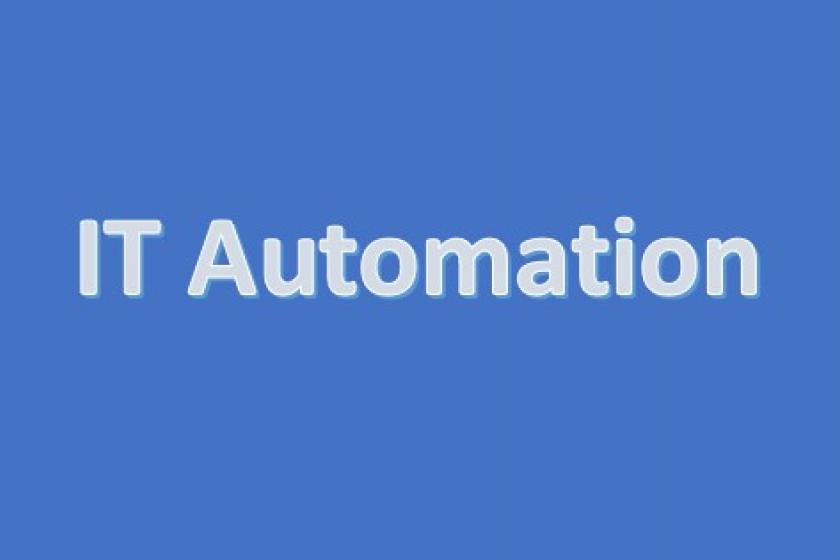The Strategic Advantage of Hyperautomation
Hyperautomation, which is more than an extension of RPA, has the potential to transform enterprise processes because of how broad and deep it is.
August 3, 2021

Even before the pandemic, organizations were increasingly adopting automation of business processes. But the sudden, global shift to remote work further ignited adoption of automation. In addition, organizations dealing with the pandemic’s economic downturn want to lower costs and increase efficiency by reducing the amount of time employees spend on repetitive, manual tasks. Until recently, this transformation has been driven by Robotic Process Automation (RPA) platforms, but with the increased demand for varied use cases, many organizations are finding RPA tools inadequate. They also want to add more intelligence to automation, which brings us to hyperautomation.
From RPA to hyperautomation
Hyperautomation is the idea that anything that can be automated in an organization should be automated. Analyst firm Gartner Inc. predicts it will be a top strategic technology trend this year, noting that it’s “driven by organizations having legacy business processes that aren’t streamlined, creating immensely expensive and extensive issues for organizations.”
The firm wrote elsewhere that hyperautomation brings together technologies like business process management, RPA with iPaaS, document ingestion, AI-based intelligence, process mining, and decision modeling. This idea has different names: Gartner refers to it as hyperautomation, IDC calls it Intelligent Process Automation (IPA), and Forrester calls it Digital Process Automation (DPA).
RPA, on the other hand, is a type of business process automation by which software or hardware systems automate repetitive, simple tasks. And just as employees do, the systems work across multiple applications. A primary drawback with RPA, particularly in its early days, is its inability to scale easily. These days, enterprises are focusing on hyperautomation, which is not merely an extension of RPA, which was only the first step in this direction.
The term “technical debt” arises from unstructured data residing in silos, legacy systems, lack of centralized data architecture, suboptimal processes and bottlenecks, and security gaps. Organizations typically operate their business processes with a patchwork of technologies and are not coherent, consistent, or optimized. Collectively, they hamper operational capabilities and dampen value propositions to customers.
Hyperautomation combines multiple technologies to help organizations develop strategic advantages based on the underlining operational environment. Progressive intelligence is added across workflows, unlike traditional automation solutions. Each of the technology components is designed to enhance an organization’s ability to intelligently automate processes.
Advantages of hyperautomation
Hyperautomation is a rapidly growing market. Gartner predicts that the market for software that enables hyperautomation will reach almost $860 billion by 2025. That makes sense, considering that hyperautomation enables organizations to achieve operational excellence and ensure resilience across business processes.
Hyperautomation holds the potential for multiple business benefits in addition to increased ROI:
Empowering your employees: Reducing redundant and time-consuming tasks, freeing employees to focus more on business-critical and strategic activities.
Systems communication: Hyperautomation allows enterprise software and systems to communicate seamlessly, driving efficiencies and providing deeper analytics into process bottlenecks.
Reducing cycle time: Process operators can intuitively automate cross-functional activities. This involves collaboration among multiple stakeholders, ultimately reducing cycle time and boosting productivity.
Adding decisioning Intelligence with AI: Automate decision-making with AI and take live data-driven decisions, just as any human operator would do.
Achieving agility: Hyperautomation orchestrates the various technology components to function in alignment with business needs and requirements. This will help organizations achieve a state of true digital agility and flexibility.
The potential to transform
Hyperautomation possesses the potential to transform enterprise processes because of how broad and deep it is. It’s more than a mere extension of robotic process automation (RPA), although RPA is definitely moving in the right direction. Hyperautomation’s combination of technologies can be used to skyrocket enterprise productivity. For example, joining document ingestion and AI technologies (like NLP, Fuzzy Logic OCR, Machine Learning, and Computer Vision) with business process management can release differentiating innovation in enterprise document processing workflows. It’s a key strategic technology that holds out huge transformative potential.
Dr. Akhil Sahai is chief product officer and founding member of Kanverse.ai.
About the Author(s)
How to Amplify DevOps with DevSecOps
May 22, 2024Generative AI: Use Cases and Risks in 2024
May 29, 2024Smart Service Management
June 4, 2024

